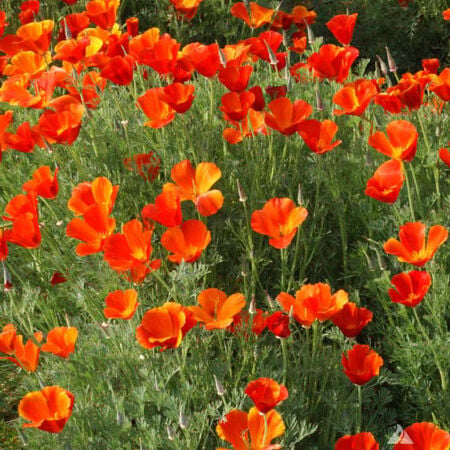California, Poppy Seeds
Key Attributes
Key Attributes
Product Details
Weight
0.01Depth
0.15Height
4.5Width
3.25Plant Height
18-24"Botanical Name
Eschscholzia californicaSeed Type
SeedAdditional Characteristics
Attracts Pollinators, Extended BloomsSeeds Per Gram
648Seeds Per Pound
294,000Packet
1,000 SeedsSow Depth
Top of SoilSeeds Per Ounce
18,375Breed
Open-pollinatedSun
Full SunLife Cycle
AnnualSow Method
Direct SowCategories
FlowersDays To Maturity (# Days)
58Seeds Per Acre
1 lbComponents
Growing Instructions
![]() Learning Download: How to Grow Poppies
Learning Download: How to Grow Poppies
Poppies are an annual planted each spring that will bring a burst of color to the garden. Once planted, Poppies are easy to care for.
Planting: Direct sow the Poppy seeds outside in a poor to average soil. If you live in Zones 3-7, direct sow seeds outdoors in the early spring when a frost may still occur. If you live in Zones 8-10, direct sow in the fall.
Watering: Once Poppies are established, they do not require frequent watering. Overwatering will result in leggy and tall Poppies.
Fertilizer: To encourage the best Poppies to grow, fertilize the Poppies once a year and then top-dress the plants with an organic material, such as manure.
Days to Maturity: Poppies will begin to bloom late spring to early summer.
Harvesting: Poppies are typically not harvested as cut flowers because their blooms will not keep for long.
Tips: Poppies self-sow, and if you don’t want them to spread and sprout in surprising places, pull the plants from the ground once they have finished blooming.
Shipping Schedule
Our Seed Promise
 "Agriculture and seeds" provide the basis upon which our lives depend. We must protect this foundation as a safe and genetically stable source for future generations. For the benefit of all farmers, gardeners and consumers who want an alternative, we pledge that we do not knowingly buy or sell genetically engineered seeds or plants.
"Agriculture and seeds" provide the basis upon which our lives depend. We must protect this foundation as a safe and genetically stable source for future generations. For the benefit of all farmers, gardeners and consumers who want an alternative, we pledge that we do not knowingly buy or sell genetically engineered seeds or plants.
The mechanical transfer of genetic material outside of natural reproductive methods and between genera, families or kingdoms, poses great biological risks as well as economic, political, and cultural threats. We feel that genetically engineered varieties have been insufficiently tested prior to public release. More research and testing is necessary to further assess the potential risks of genetically engineered seeds. Further, we wish to support agricultural progress that leads to healthier soils, to genetically diverse agricultural ecosystems, and ultimately to healthy people and communities.
To learn more about the "Safe Seed Pledge" please visit www.councilforresponsiblegenetics.org.

